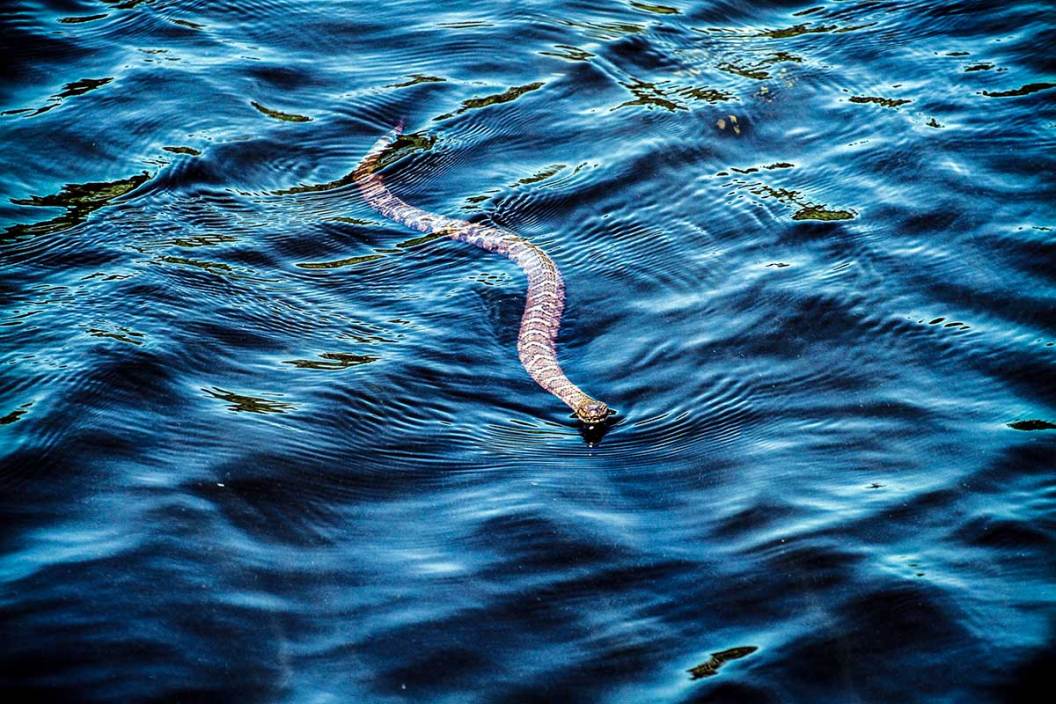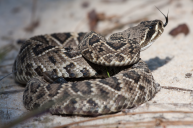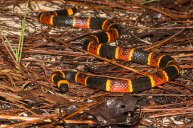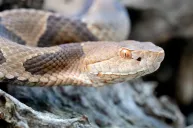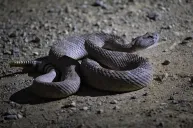We've all been there: floating around in the boat, paddling the kayak, or just casting a fishing rod from the shore when you see one of these slithering snakes swimming its way towards you. What sort of a reaction do you typically have? For most of us, we look at it with a sense of awe. Some of us get a little frightened. The majority of us will at least get out of its way. In reality, they are not out to get us, and rarely (if ever) attack unprovoked. For the most part, water snakes are non-venomous and there are only a few species of aquatic snakes that pose a danger in North America. They are altogether stealthy, shy, and quite adept at avoiding humans, which pretty much means they're usually nearby when we don't even know it. As a service to all outdoorsmen and women, we will shed some light on the aquatic snakes of our continent and share what they look like, how they live, and in some interesting cases how beneficial they are to our wetland environments. We may not always revere snakes, but we should certainly regard them with respect as a natural part of the aquatic world.
Lake Erie Water Snake

Reptyrog/Getty
The Lake Erie water snake was once a threatened species along the coast of its namesake home, but has found a new lease on life thanks to conservation efforts. Although similar in size to its cousin the Northern water snake, this species' normal markings are mostly gray, bordering on the greenish-brown side. One great thing about these naturally-occurring water snakes is that they have taken a great affinity for eating the invasive round goby as a large part of their diet. When a native species does their part in curbing the populations of invasive species, you've got a good thing going.
Red-Bellied Water Snake
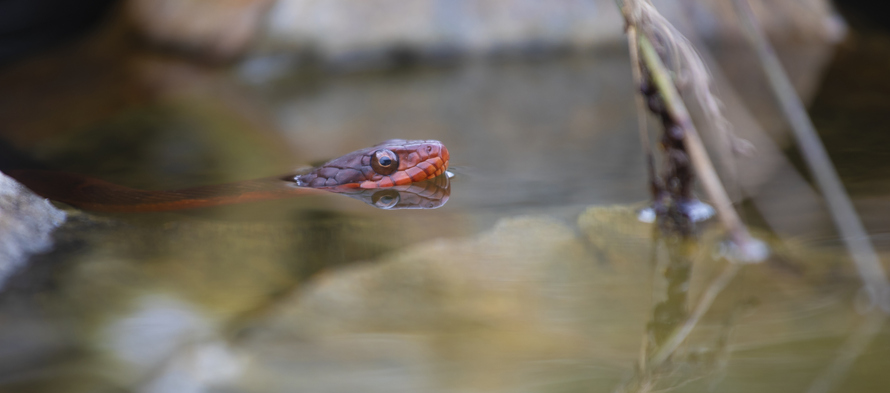
gsagi /Getty
The Savannah River Ecology Laboratory says that this snake is found throughout the Coastal Plain of the Southeast U.S. and in some areas of the lower Piedmont Plateau, but is absent from the Florida peninsula. Red-bellied snakes have a definitive red-orange underbelly giving them their moniker, and are among the larger water snakes, typically reaching the three to four feet long range. They love to eat amphibians and fish when they can catch them, and are common on roadways during wet weather. One interesting fact about the red-bellied water snake is that when its threatened or spooked, they will usually flee onto land from the water.
Plain-Bellied Water Snake
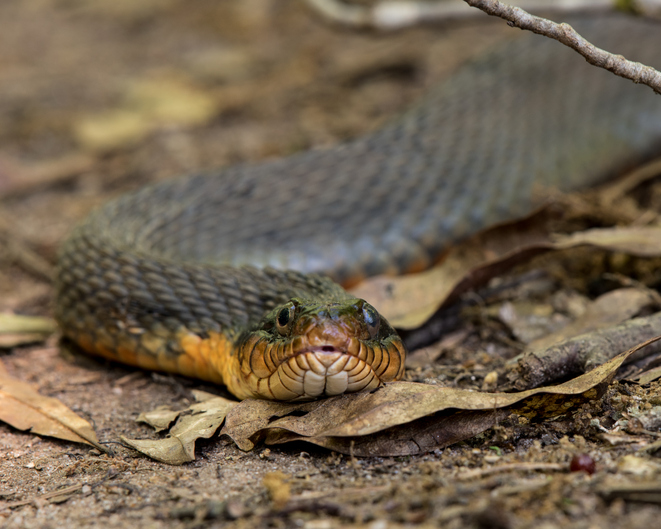
kellyvandellen/Getty
Plain-bellied water snakes (sometimes referred to as yellow-bellied water snakes) live in the Gulf Coast region, but their range extends from Georgia to Texas, and all the way to the southern part of Iowa. It is medium-sized for a water snake, but with a heavier body type. These snakes may look like they are colored black, but upon closer inspection they are really a greenish-grey color.
Brown Water Snake
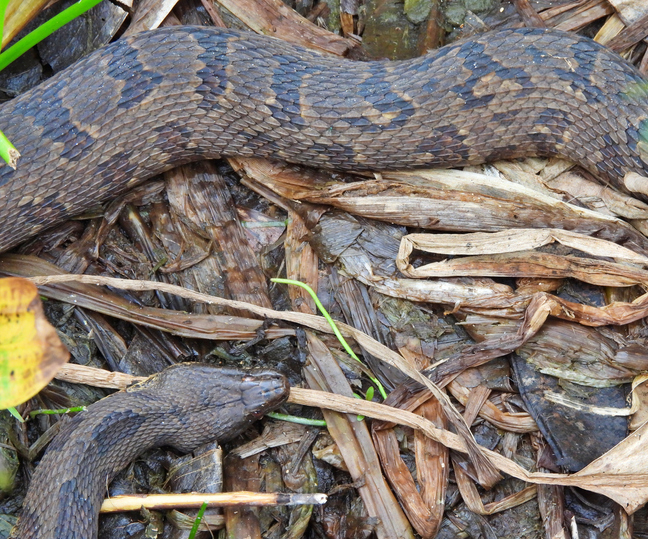
passion4nature/Getty
Similar to their cousins and close neighbors the banded water snake, the brown water snake is technically a semi-aquatic snake and found along the Coastal Plains from the Carolinas to Alabama. As their name suggests, they are mostly some phase of brown in color with a head that is visibly wider than its body or neck. The brown water snake is regularly found resting in the trees and basking in the sunlight. They love eating fish, which usually keeps them close to permanent bodies of water. They're also know as excellent swimmers.
Diamondback Water Snake
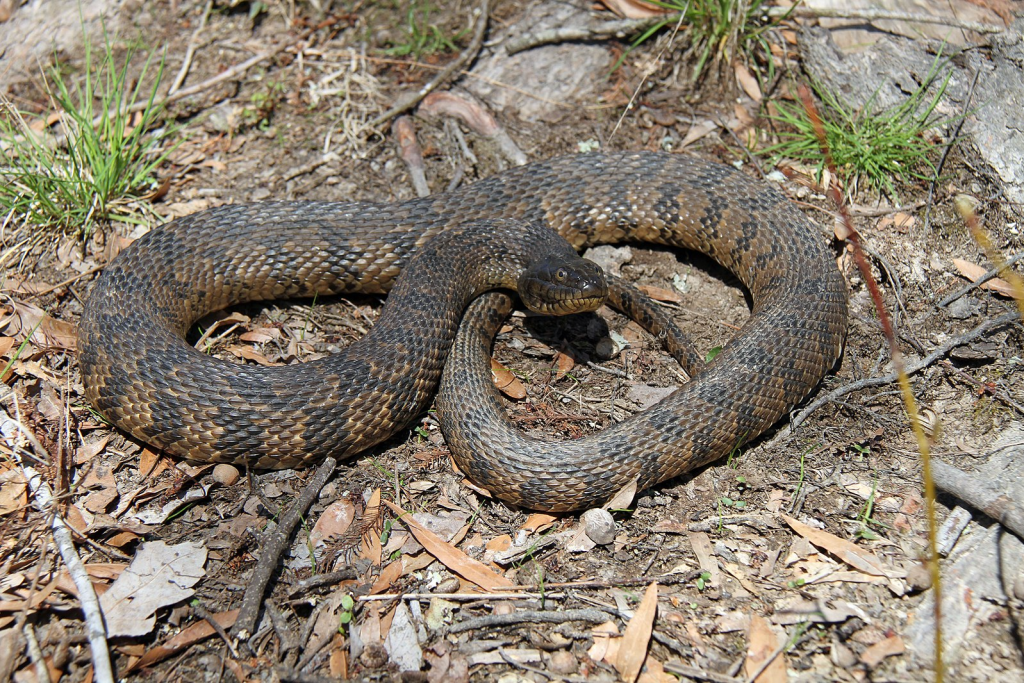
flickr: Greg Schechter
Despite the cringe-inducing name, the diamondback water snake is non-venomous and feeds on fish, crayfish, and amphibians. They are mainly found along the Mississippi River, parts of Texas, and into Mexico. Male diamondback water snakes are the only species in the U.S. that have multiple papillae on the underside of their chin. Their teeth are built to hold on to fish, which is yet another reason to leave this snake (and all others) be. No, it won't inject venom, but it still might hurt to get bit!
Banded Water Snake
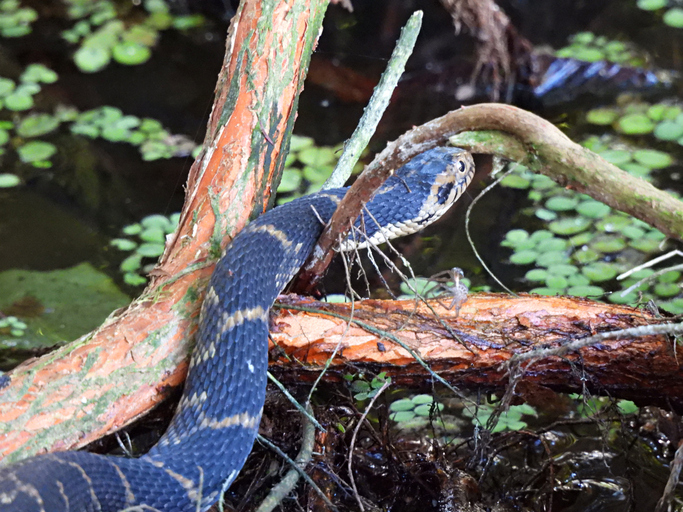
passion4nature/Getty
The banded water snake is another semi-coastal water snake that exists from the Gulf states to the Carolinas. They have a color pattern that is unique in that it varies from light brown to reddish to even a black phase. They also have dark cross bands that darken with age. They like to post up in the overhanging branches of waterside trees to loaf in the sun and to stalk their preferred prey, fish and frogs.
Northern Water Snake
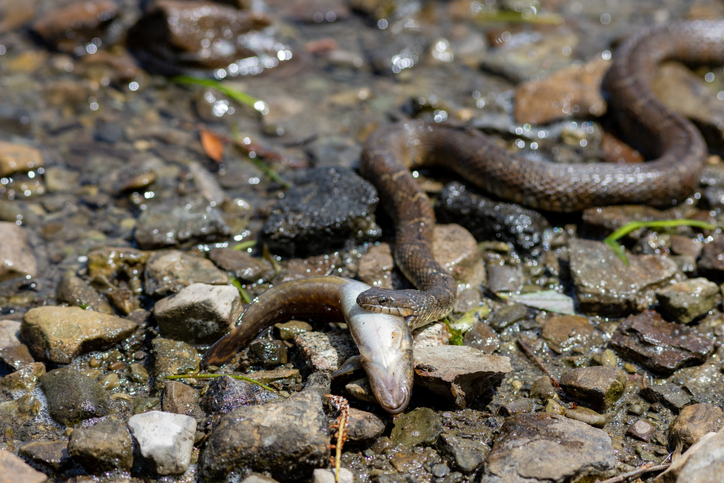
Colin Temple/Getty
Probably the most well known of all the water snakes, the northern water snake is very common throughout the northern tier of the U.S. and southern Canada. Northern water snakes give birth to live young and are very common in areas with well established ponds, lakes, and river systems. This is the snake many commonly confuse with the dangerous cottonmouth.
Cottonmouth
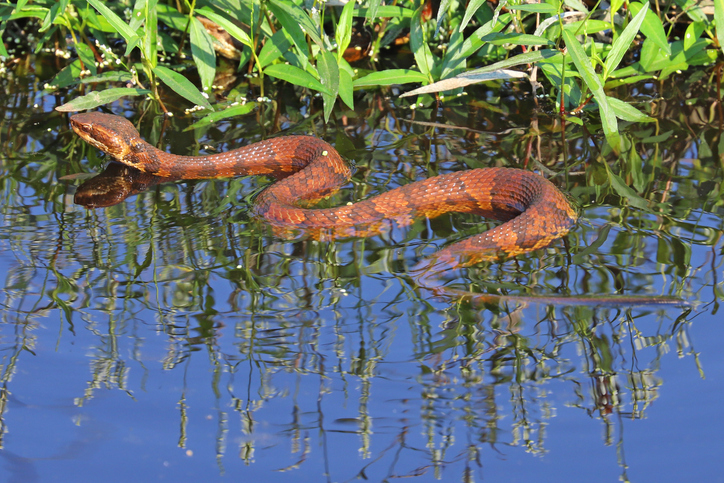
Trevor Baker/Getty
Also known as a semi-aquatic snake, the cottonmouth (sometimes referred to as a water moccasin) is a dangerous and venomous snake whose range stretches from the Virginia Coastal Plains south to Georgia and the Gulf states. They love freshwater habitats but are most common in swamps, floodplains, and heavily-vegetated wetlands. While it is true that the cottonmouth seldom bites unless stepped on or picked up, it still has the reputation of being quite aggressive.
The Importance of Water Snakes
Water snakes have a unique importance in their ecosystems. They help control overpopulations of reptiles and amphibians while also feeding on fish that they find. Other than the cottonmouth, these water snakes are not dangerous to humans. Unfortunately, many people mistake certain species for the cottonmouth, and end up killing the snake in a case of mistaken identity.
These reptiles live in and around the same waters where we hunt and fish, doing exactly the same thing and are integral to the environment in which they live. Aquatic reptiles such as these sometime get a bad name, but with more information and learning comes a better understanding.
Please check out my book "The Hunter's Way" from HarperCollins. Be sure to follow my webpage, or on Facebook and YouTube.
